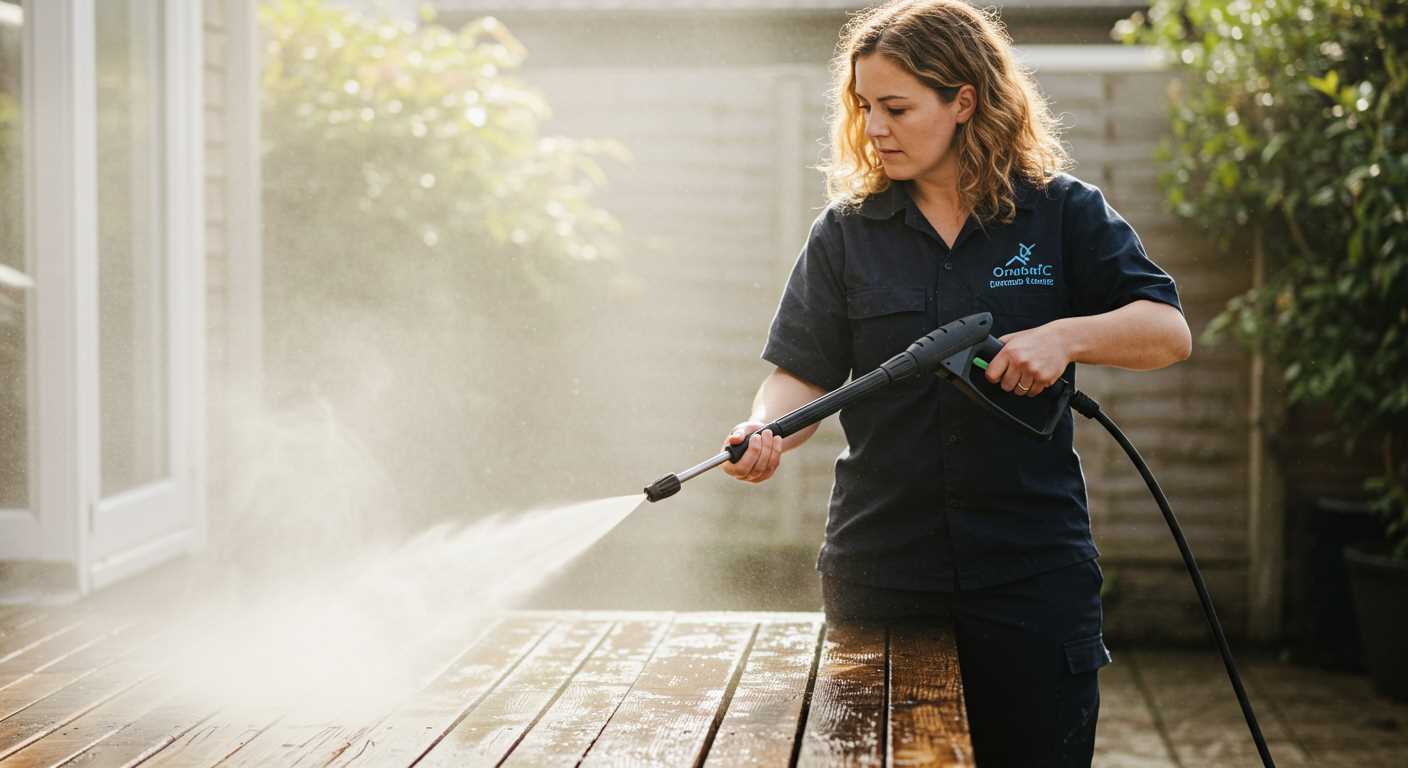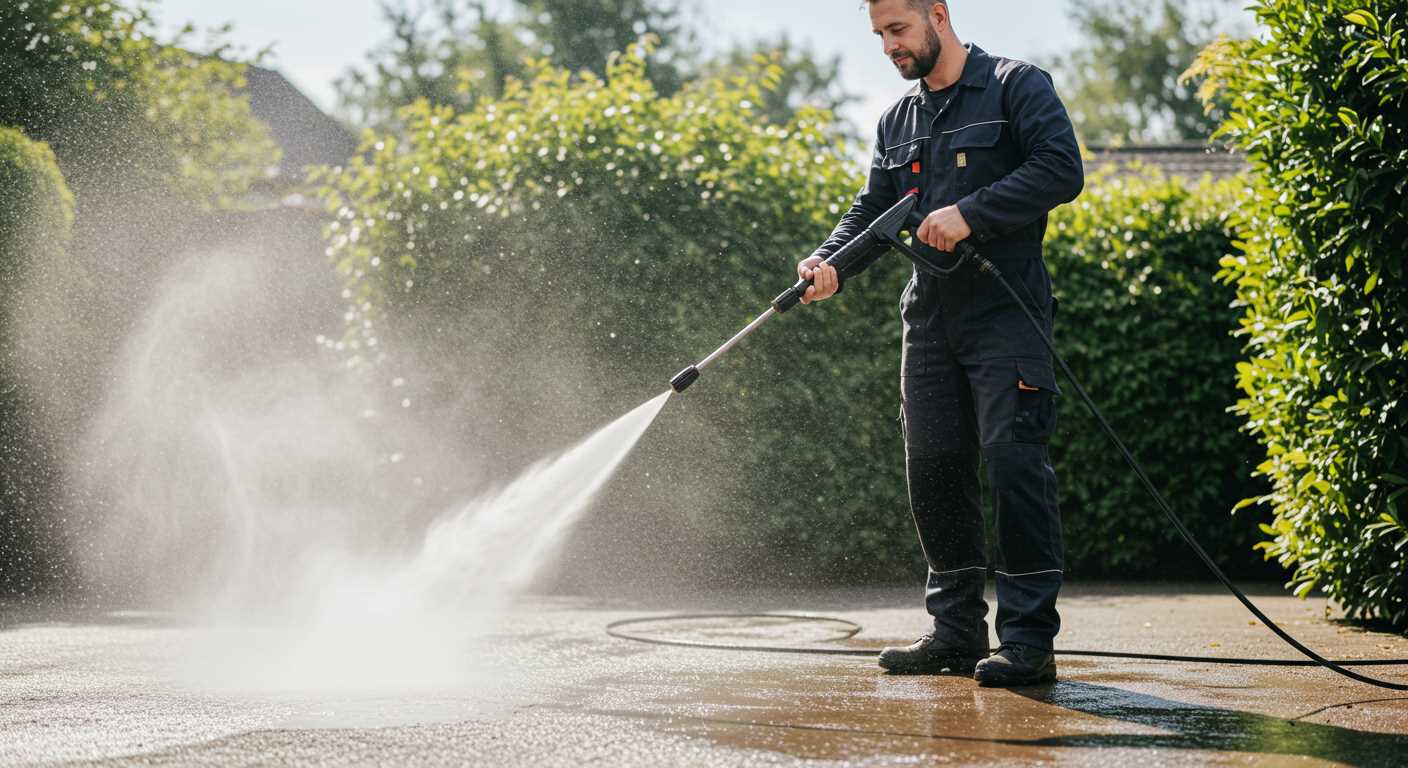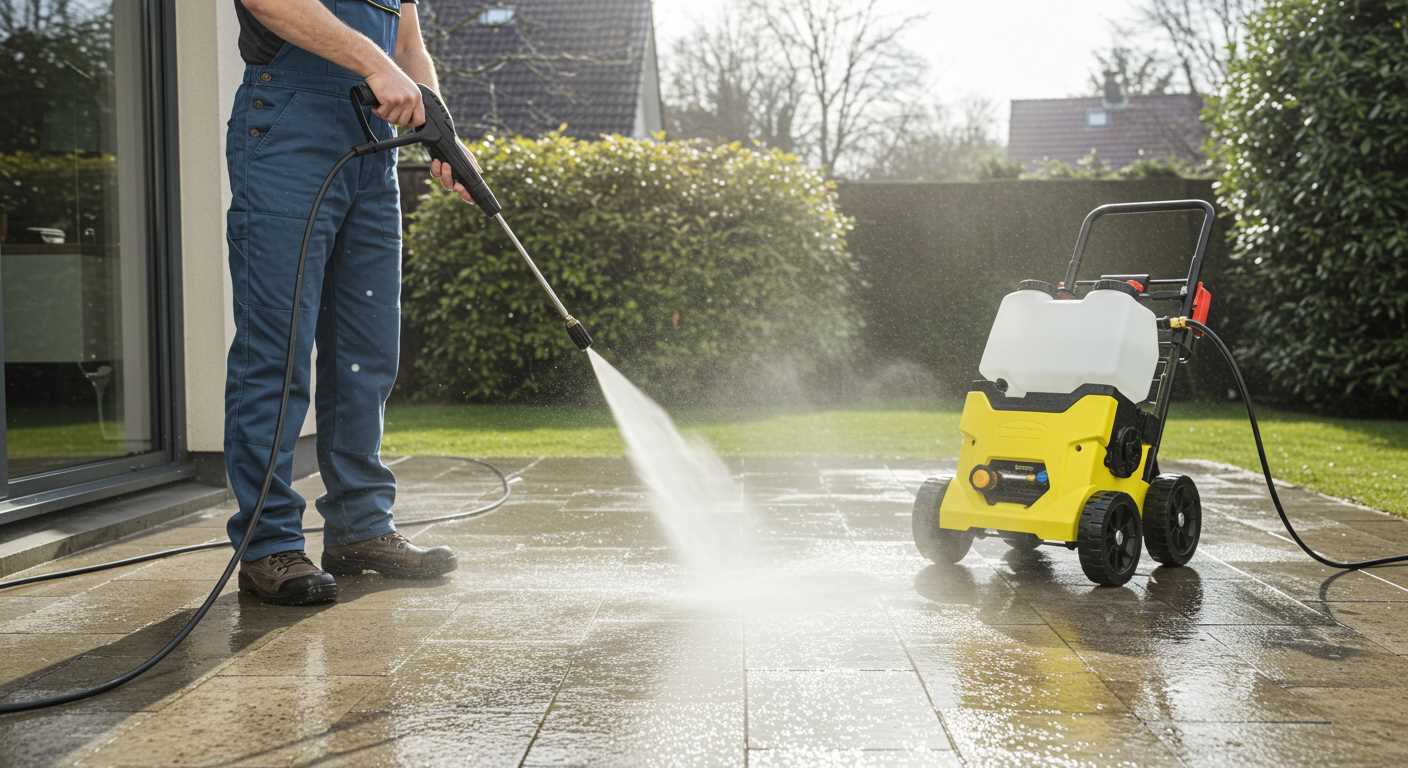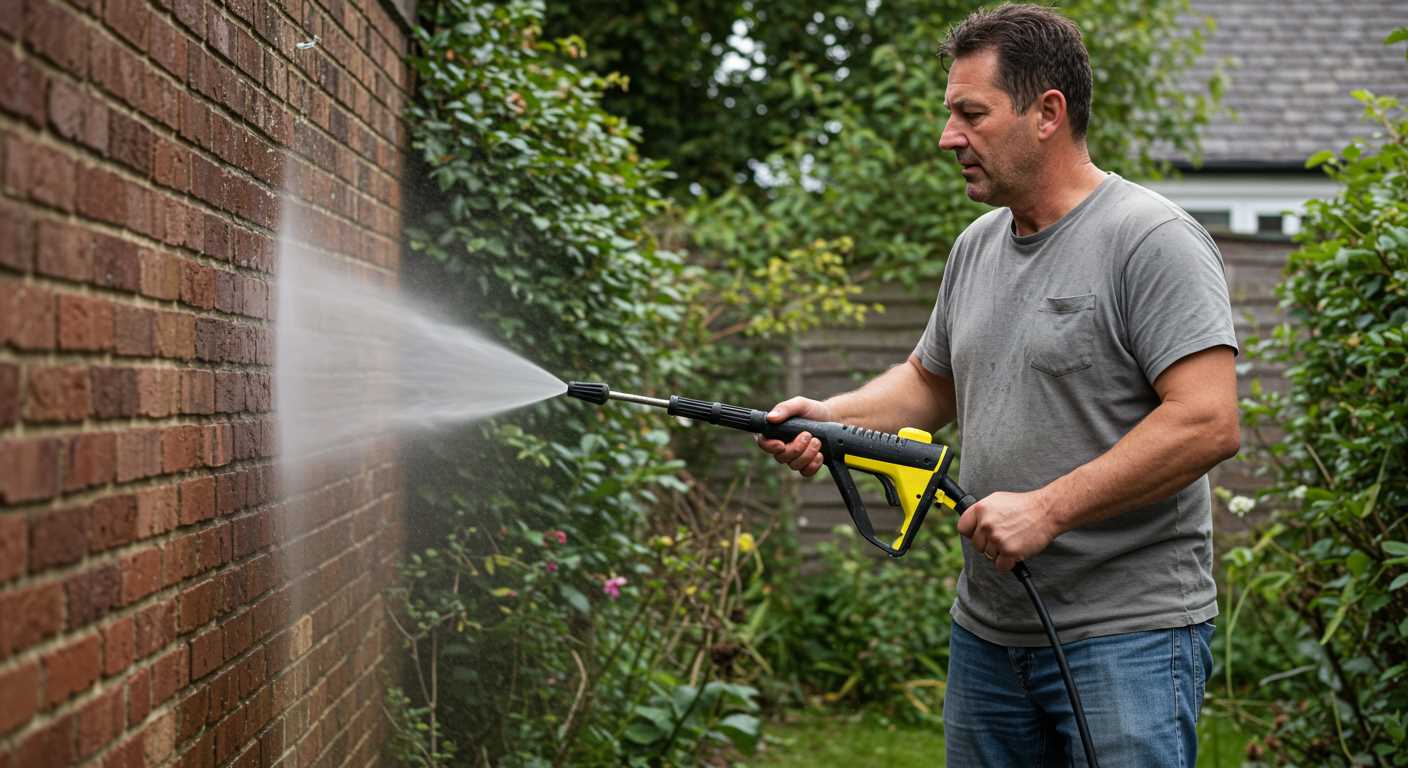



The safest and most effective substances to incorporate into your cleaning kit include sodium hypochlorite (bleach), which excels at mould and mildew eradication. For general degreasing tasks, a mix of a surfactant and water creates a powerful cleaning agent that tackles oils and grime effectively. Ensure that any product chosen is safe for the surfaces being cleaned to prevent damage.
In cases of tough stains on concrete or brick, consider sodium hydroxide-based solutions. These are particularly potent against grease and grime built up over time. Be cautious and always follow the manufacturer’s instructions to maintain equipment reliability and safety.
For those operating in environmentally-conscious settings, eco-friendly options like citric acid or vinegar provide an effective alternative. While these options may require more aggressive scrubbing, they are significantly safer for both users and the environment. Always test a small area first to assess compatibility with your specific surfaces.
When utilising any of these solutions, don proper protective gear and ensure appropriate ventilation. Preparing your cleaning regimen with the right substances will not only enhance performance but also prolong the life of your apparatus.
Recommendations for Effective Cleaners in High-Pressure Equipment
With a wealth of experience in this field, I advise selecting specific solutions tailored for different applications. Alkaline cleaners excel at removing grease and oil, making them ideal for greasy machinery or automotive surfaces. For tackling mineral deposits or hard water stains, acidic formulations, such as citric or phosphoric acid solutions, yield impressive results.
A good choice for organic stains, such as mould or mildew, lies in using a diluted bleach solution or specially designed biocides. Always ensure thorough rinsing to prevent any potential surface damage.
Carpet cleaning requires a unique approach. Use cleaners explicitly formulated for upholstery or carpets, ensuring they are safe for high-pressure applications to avoid fabric deterioration.
When tackling delicate surfaces like wood, opt for biodegradable options that provide a gentle yet effective clean without causing damage. These are often plant-based solutions that are tough on dirt but soft on materials.
Mixing cleaners should be approached with caution. Always follow the manufacturer’s guidelines, as combining different substances can lead to harmful reactions or diminished efficacy. Also, consider pre-treating surfaces where intense cleaning is necessary; this often enhances overall results.
Utilise the built-in dispensers of your device for seamless application. These systems are designed for optimal mixing ratios, ensuring that each job is executed with precision. Adhering to these recommendations will maximise cleanliness while safeguarding your equipment and surfaces.
Understanding Detergents for Pressure Washing

For optimum cleaning results, I recommend choosing detergents specifically formulated for use with your equipment. These products enhance efficacy and protect both the machine and surfaces being cleaned. Look for biodegradable options that break down easily in the environment while still delivering powerful cleaning performance.
Always select a solution that matches the cleaning task. For example, degreasers work well for stubborn oil stains on driveways, while surfactants can aid in lifting dirt off delicate surfaces like vehicles. If mildew or algae removal is needed, a dedicated mildew remover will simplify the process.
When mixing solutions, adhere to the manufacturer’s guidelines regarding dilution ratios. Using concentrated formulas without proper dilution could harm your devices and surfaces. Simple measurements often yield the best results.
Prior to application, test any cleaning agent on a small, inconspicuous area. This practice prevents unexpected damage and ensures compatibility with the surface. Monitor the contact time carefully; allowing the cleaner to sit for too long can cause adverse effects.
For versatility, consider multi-purpose detergents that can tackle various tasks, from siding to outdoor equipment maintenance. Ensure that the product is safe for all surfaces intended for cleaning, including painted and composite materials.
After cleaning, rinse thoroughly with water to remove any residue. This step protects surfaces from potential discolouration and enhances the overall finish. Regular maintenance of the device, including cleaning the detergent tank and nozzle, also improves longevity and performance.
Choosing the Right Chemical for Stubborn Stains
For tough blemishes, such as grease, oil, or mildew, I recommend using alkaline solutions or specialized degreasers. These formulations break down complex substances effectively, ensuring a thorough clean. Always check compatibility with surfaces to avoid damage.
Surfaces Matter

Concrete and brick structures often require a stronger approach. A sodium hypochlorite solution can tackle mould and mildew with ease. For painted or wooden surfaces, a mild solution typically suffices, preventing potential damage while maintaining cleanliness.
Application Techniques
Applying the chosen cleaner correctly maximizes results. Use a low-pressure setting to spread the detergent evenly, allowing it to penetrate the stain. Let it sit for the recommended time to enhance effectiveness before rinsing at higher pressure for a pristine finish.
Regularly testing new solutions on a small area is wise. This practice helps identify any adverse reactions, ensuring safety and maintaining the integrity of surfaces.
Safety Precautions When Using Chemicals
Always wear appropriate personal protective equipment (PPE). This includes gloves, goggles, and masks, which shield against harmful exposures.
Proper Handling and Application
- Read labels carefully for specific guidelines on dilution ratios and application methods.
- Test in an inconspicuous area before applying to a larger surface to ensure no damage or discolouration occurs.
- Keep work areas well-ventilated to avoid inhalation of fumes.
Storage and Disposal

- Store all substances in original containers with tight-fitting lids, away from direct sunlight and extreme temperatures.
- Follow local regulations for disposal, as many substances can be hazardous to the environment.
- Never mix different products unless manufacturer guidelines explicitly state it is safe; reactions can be dangerous.
Keep emergency contacts accessible, including poison control and local emergency services, in case of accidental exposure or spillage.
Be aware of potential chemical reactions with surface materials. Certain substances may cause corrosion or damage to delicate finishes.
In summary, respect safety protocols for a successful and hazard-free cleaning experience.
Eco-Friendly Options for Pressure Washer Use
For those prioritising sustainability, plant-based soaps and biodegradable detergents represent solid choices for cleaning power. They offer effective dirt removal while minimising environmental impact. Look for formulations derived from natural sources, as they break down more easily and are less harmful to aquatic life. Popular options often include ingredients like citrus extracts and coconut-derived surfactants.
Vinegar and Baking Soda Solutions
Combining vinegar and baking soda creates a non-toxic cleaner capable of tackling various surfaces. This mixture effectively cuts through grime while being safe for the environment. Use it in conjunction with your device for a refreshing clean without harsh residues.
Essential Oils for Scent and Clean
Incorporating essential oils such as tea tree or lavender into your cleaning regimen not only enhances fragrance but also provides antibacterial properties. Mix a few drops with a biodegradable soap solution for an eco-friendly boost during your tasks.
Proper Dilution Ratios for Different Chemicals

To achieve optimal results during outdoor cleaning tasks, it’s essential to adhere to specific dilution ratios for various solutions. The right mixture enhances performance and prevents surface damage while ensuring that equipment operates efficiently.
Standard Dilution Guidelines
| Solution Type | Recommended Dilution Ratio |
|---|---|
| Alkaline Degreaser | 1:10 to 1:20 |
| Acidic Cleaner (e.g., rust remover) | 1:4 to 1:10 |
| Environmentally Friendly Detergent | 1:20 to 1:40 |
| Mildew Remover | 1:8 to 1:16 |
| Pressure Wash Soap | 1:10 to 1:30 |
Adjusting Ratios for Specific Tasks
For particular stains or heavier grime, it might be necessary to adjust the ratios. Testing a small area first can help ensure the mixture is suitable. Always refer to the manufacturer’s instructions alongside these guidelines for the best outcomes.
Taking care to use the correct dilution not only improves cleaning efficiency but also prolongs the lifespan of both the surfaces being cleaned and the equipment itself. When in doubt, thinner mixtures typically pose less risk compared to overly concentrated solutions.
Storage and Disposal of Pressure Washing Chemicals
Store liquids in a cool, dry place away from direct sunlight and heat sources. Use original containers for safety and to ensure proper identification. Labels should clearly indicate contents and hazard warnings.
- Keep away from children and pets. Use child-proof caps if available.
- Avoid mixing different substances unless specified on the label, as reactions can lead to dangerous fumes or hazardous conditions.
- Ensure lids and caps are tightly sealed to prevent leaks and evaporation.
Disposing of liquids must follow local regulations to mitigate environmental impact. Here are specific guidelines:
- Check with local waste management. Many areas have special facilities for hazardous waste.
- Do not pour down drains or toilets unless permitted, as it may contaminate water supplies.
- Many retailers offer recycling programs for cleaning products; explore these options.
Consider using less harmful alternatives when possible. Biodegradable solutions often require less strict disposal methods. This choice benefits both users and the environment.
For leftover concentrates, make small batches to prevent wastage and ease disposal. Label any homemade mixes clearly and store in designated containers. This practice ensures safety and accountability.








